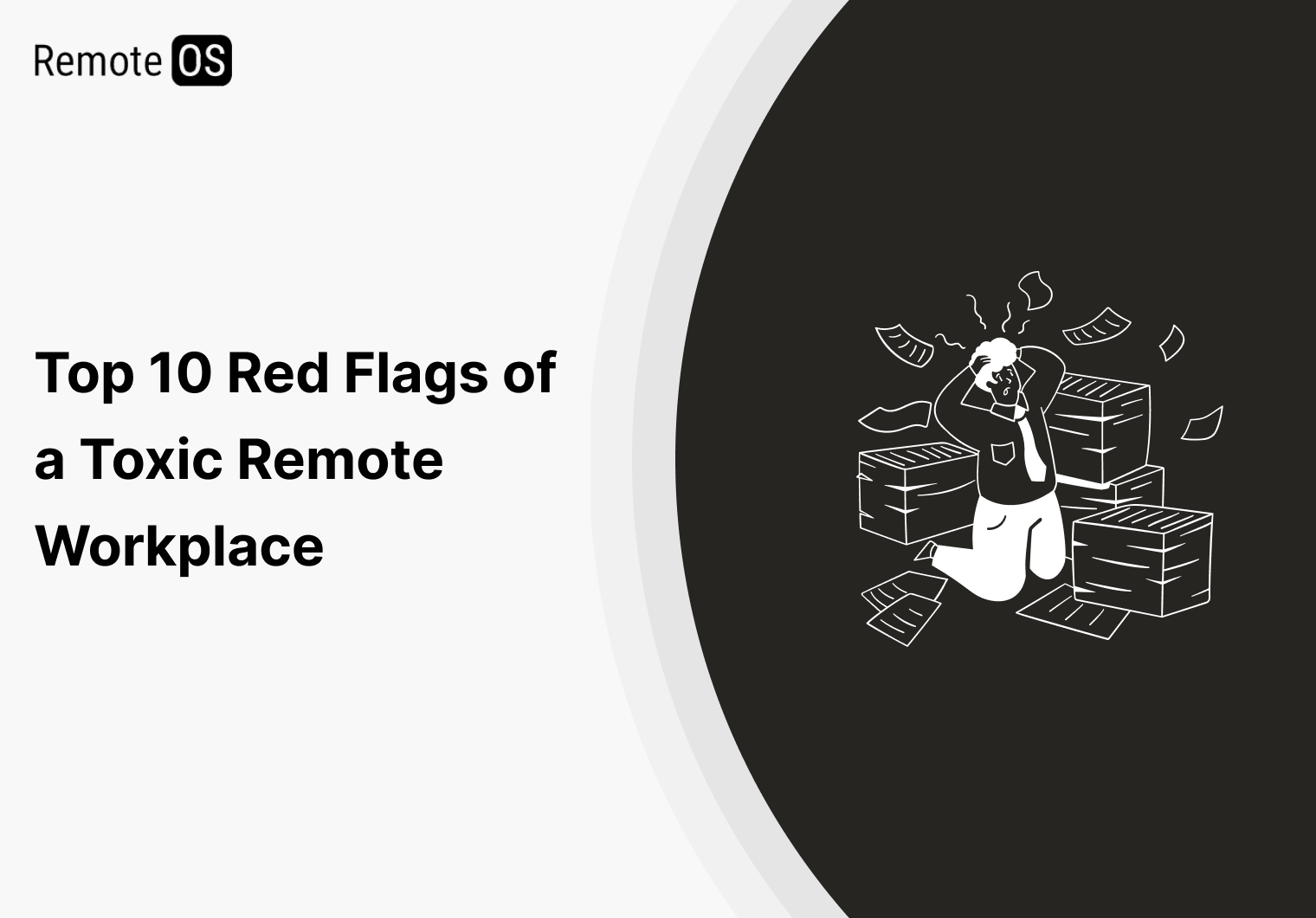Remote work incorporates a number of advantages but sometimes also includes challengingly. A toxic workplace, even remotely, might bring detrimental damage to well-being and productivity. In this blog post, we are going to explore the red flags of a toxic workplace, how to identify them, and what you can do to address these issues.
1. Poor Communication
Poor communication is one of the biggest telltale signs of a toxic workplace. The requirement for clear and effective communication in a remote setting is very high. If you feel information is not shared openly, there is a lack of regular updates, or that you are left outside when there are important conversations, then that is a red flag on the breakdown in communication. Poor communication can lead to misunderstandings, lowered productivity, and a sense of isolation.
2. Lack of Trust
Trust is essential in any kind of work environment, and it goes without saying that it is even more vital in a remote setting. If you think that your managers or colleagues do not trust you to do your job, well, it really can be a toxic workplace. Micromanagement, constant check-ins, and a lack of autonomy are huge red flags. A healthy work environment should also empower employees and trust them to be in charge of their tasks.
3. Unclear Expectations
In a toxic workplace, expectations are usually nonexistent or changing. This will leave you in a state of confusion and frustration while trying to meet the moving targets. Clear and consistent expectations are needed for productivity and job satisfaction. If you are not clear about your role or what is expected from you, seek clarity from your superiors.
4. High Turnover Rates
High turnover is a big red flag of a toxic workplace. If you feel colleagues are quitting left and right, that could suggest other, deeper problems with the organization. Undoubtedly, high turnover has the potential to disturb workflows; it also brings more stress for those staying back.
5. Overwork and Burnout
Remote work is a surefire way to blur the line between personal and professional life, hence leading to overwork and burnout. If you’re expected to be available at all hours or if there’s no respect for your boundaries and personal time, it is an evident red flag of a toxic workplace. Overwork impacts negatively on work effectiveness, leading to mental disorders and impacting job satisfaction.
6. Negative Company Culture
Company culture is the major reason behind job satisfaction. A toxic workplace may mean negative culture with no support, no recognition, and no opportunities. Teamwork, respect, and professional betterment must be instilled through a positive culture.
7. Lack of Resources
This may mean outdated technology, inadequate training, or even insufficient managerial support. This includes a toxic workplace often not providing you with the tools needed to succeed in your job.
8. Exclusion and Isolation
One common challenge of remote work environments is feeling left out or alone. A toxic workplace will not exert an effort to involve remote workers in meetings, decisions, or social activities. Feeling included is an important aspect of the bonding process and morale of any team.
9. Unfair Treatment
If employees are exposed to unfair treatment in terms of favoritism, discrimination, unequal opportunities, or like situations, then that is an outright factor that characterizes a toxic environment. All workers deserve respect and equal opportunities for success.
10. Resistance to Feedback
A healthy work environment is one that values and acts on feedback. In a toxic workplace, it may be ignored or worse—punished. This will surely stifle innovation and growth, leading to an unmoving and frustrating work experience.
Conclusion
The red flags of a toxic workplace can be identified to deal with and resolve such problems. If you happen to be in a hostile remote work environment, be sure to communicate your concerns openly with management or HR. Seek help from colleagues; do not hesitate to be on the lookout for a healthier work environment if need be. Your well-being and job satisfaction stand paramount.
Tips to Help You in Dealing with a Toxic Workplace
- Communicate clearly:
Go straight to your manager or HR and talk about the issues. - Set Boundaries:
Designate your working hours and be very firm about them. - Seek Support:
Discuss with colleagues or professional networks. - Document Problems:
Record every instance of highly toxic or very unfair treatment. - Consider Your Options:
If the environment is truly unbearable, don’t wait for it to improve; find another job.
By identifying and acting on these red flags, you can ensure the protection of your well-being and the maintenance of a productive positive remote work experience.
Feel free to give your feedbacks and suggestions in the comments section.
Follow RemoteOS for updates on interesting articles!
Keep exploring and innovating!!


Leave a Reply